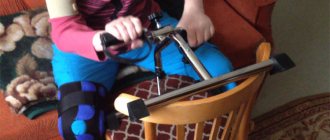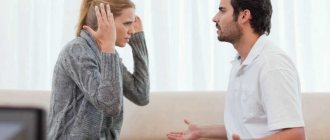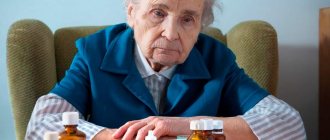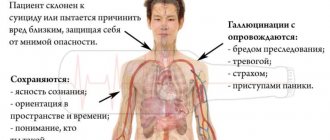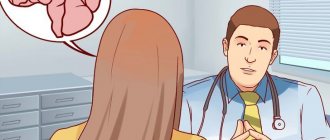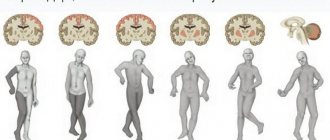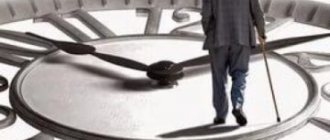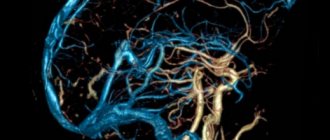Prevention
To prevent a disease such as pneumonia from developing in bedridden patients, several preventive measures are required.
It is necessary to exercise stress on the body to maintain muscle tone. And also regularly perform therapeutic breathing exercises. Physical activity may include the following measures:
- transferring the patient from a lying position to a sitting position;
- You can turn the patient from one side to the other several times a day;
- regular gymnastic exercises with raising your arms up and down, this will allow the chest diaphragm to return to its normal position and improve blood supply.
Use a humidifier. The air in the room should be moist, but not heavy, do not overdo it, everything is good in moderation. Dry air provokes infectious diseases by drying out the mucous membranes of the respiratory tract.
You can resort to massage by lightly tapping the back area, without going into the spine area. Ventilate the room regularly, but carefully so that the patient does not get puffed up. Also do breathing exercises.
You can use a regular inflatable ball for such exercises. By inflating and deflating it, the lungs are fully opened and mucus and harmful organisms are expelled from them.
It should be remembered that any preventive and therapeutic measures should be taken after consultation with a doctor, since no one will be happy about the fatal outcome of the situation.
An elderly person should sleep little: fact or fiction
Many people mistakenly believe that 6-7 hours are enough for older people to get proper rest, explaining this with a decrease in physical activity and a calmer course of life.
Each person is individual, and, despite general physiological patterns, the duration of sleep is determined by the characteristics of his body, as well as his established daily routine. When a middle-aged person retires, it is difficult to change his life, and the habit of waking up early in the morning remains. Despite this, his quality of sleep improves, which is due to the absence of problems associated with professional activities. Of course, over time, many people's sleep patterns change, but most of them still maintain them for the rest of their lives. As a rule, this category of pensioners complains less about senile ailments and practically does not get sick.
Complications and methods of dealing with them
When you stay in a supine position for a long time, blood circulation and the functioning of almost all internal organs are disrupted, and the ability of the body's immune defense is significantly reduced. Because of this, complications can arise, sometimes leading to irreparable consequences.
Low pressure
The causes of hypotension may be drug therapy in an incorrectly selected dose, redistribution of blood in a constant horizontal position, or weakness of the heart muscle. Manifestations of this condition are pale skin, dizziness, tinnitus, chilliness, drowsiness, headaches, and severe weakness.
Medicines to increase blood pressure are used in the post-stroke period for emergency treatment - in a collaptoid or shock state (Dobutamine, Mezaton).
If hypotension is mild, general tonics are recommended:
- an infusion of rose hips, St. John's wort and immortelle flowers, taken in equal parts (a tablespoon of the mixture per glass of boiling water, brew overnight in a thermos, take 50 ml half an hour before meals);
- green tea;
- honey with pollen;
- juice from carrots and celery.
Watch the video about recipes for increasing and decreasing blood pressure:
Constipation
Intestinal dysfunction is associated both with neurological disorders and with forced physical inactivity and pureed food. To prevent constipation, you need to review your diet to include:
- juices from vegetables (carrots, beets, pumpkin), fruits (apricots, plums);
- vegetable oil (in the morning on an empty stomach, take a tablespoon with half a glass of cool water);
- decoction of prunes, dried apricots and figs;
- homemade fermented milk drinks using starter cultures;
- additive for porridge, kefir - a teaspoon of ground bran, pre-steamed with boiling water, be sure to drink at least 1.5 liters of water;
- ground dry seaweed (kelp) - use instead of salt;
- infusion of flaxseed (a tablespoon per glass of boiling water), strain after 20 minutes, drink twice.
If these preventive measures are insufficiently effective, laxatives help achieve regular bowel movements. In consultation with your doctor, use:
- laxative tea;
- Guttalax, Regulax, Picolax drops;
- Senadexin tablets;
- Duphalac syrup;
- therapeutic enemas Norgalax, Microlax, Normacol, Enema;
- laxative suppositories – Bisacodyl, Glycerin.
If there has been no bowel movement for more than 3 days, a cleansing enema is indicated.
Pneumonia
Acute pneumonia in the post-stroke period is the cause of death in approximately 20% of cases. In a bedridden patient, its main cause is the entry of water and food into the respiratory tract.
Therefore, it is not recommended to feed the patient in the usual way in the absence of consciousness or sensitivity of the pharynx, or impaired cough reflex. Such patients are advised to administer a nutrient solution through a tube or intravenously.
Severe pneumonia increases cerebral edema and leads to worsening neurological abnormalities. Manifestations may include: difficulty breathing, cough, chest pain, increased body temperature. It should be taken into account that in elderly and weakened patients, pneumonia can occur without fever. Treatment requires antibiotic therapy. It is possible to prevent the development of this complication by:
- regular breathing exercises;
- turning over in bed on your side every 2 hours;
- use of vibration (anti-bedsore mattresses);
- tapping the chest in a position on the healthy side.
Watch the video about preventing pneumonia in bedridden patients:
Bedsores
They arise due to excess pressure of the body weight on areas of contact with the bed. They may fester with the development of sepsis. When a bedsore forms, the skin turns pale, then turns red and becomes dead. To prevent the occurrence you need:
- from the first days of staying in bed, examine the patient’s sacrum, shoulder blades and heels, wipe them with camphor alcohol;
- change body position;
- avoid sweating or diaper rash;
- regularly replace wet clothes and sheets, use absorbent diapers under the buttocks and perineum;
- purchase an anti-decubitus mattress or rubber circle;
- Wash the patient daily and dry the skin completely;
- carry out massage and therapeutic exercises.
Stages of bedsores
To heal the skin defect, ointments are used: Actovegin, Solcoseryl, Oflocain, Methyluracil, Panthenol, Argosulfan.
The most serious forecasts come from little things
As you know, in medicine there are no trifles. Medical scientists have identified factors that reliably influence how long a person can live after a stroke.
The volume of damage to brain tissue or the size of the stroke. People with extensive brain damage require emergency intensive care, mechanical ventilation, and cardiovascular support. It is no secret that some strokes are simply incompatible with later life or shorten it significantly. It is unknown how long such patients can live in a hospital bed: a day, two or a month. Doctors usually warn relatives about such situations.
The consequences of a stroke greatly change the quality of life and shorten its duration. We are talking about extensive paralysis. Complete paralysis of half or the entire body confines a person to the bed. A constant horizontal position without special mattresses and turns in bed is doomed to bedsores, pneumonia and other infectious complications. Complications lead to tragic outcomes, greatly reducing the life time after a stroke. Although, with adequate care, bedridden patients live for many years. The patient's age plays an important role. Younger people have a chance of living several years longer after a disaster, all other things being equal. Proper organization of living space. After discharge from the hospital, a person faces a lot of inconveniences
It is important to protect the surrounding area. Falls due to leg weakness, dizziness and imbalance can result in broken bones
In particular, a hip fracture confines elderly patients to bed and is very difficult to treat. Prolonged immobility after a stroke leads to blood stagnation and the formation of blood clots in the deep veins of the legs. With a sharp rise, blood clots can break off and travel through the bloodstream to almost any organ. If it enters the lungs it causes pulmonary embolism, which can be fatal.
Unfortunately, a stroke, in addition to brain damage, causes a lot of changes in the body that greatly affect life expectancy.
Legal consultation online 9111.ru
6. My father had a stroke and his right side was paralyzed. Lives alone. Pensioner. He is now in the hospital. The social worker calls and says take him away, as we are discharging him.
And I have neither the financial nor the housing opportunity to take him in and care for him. With all the desire. What to do? And what rights does a bedridden patient have after a stroke if his family cannot care for him? Thank you.
6.1.
This issue is discussed in sufficient detail, with the corresponding layouts, for example, at this address: More >>>
7.1. The law does not set deadlines. Timing is determined by doctors, if necessary. The law simply determines the timing of payment of benefits in different cases, in particular in this one. See Art. 6. Federal Law “On compulsory social insurance in case of temporary disability and in connection with maternity” dated December 29, 2006 N 255-FZ.
8. Our grandmother died yesterday, the clinic refused to issue a certificate to the morgue so that they would not perform an autopsy, we have certificates from the police and ambulance that she died on her own, not a violent death. They refused on the grounds that we had not called a local doctor to our house for a year, my grandmother had a stroke, she was insulin dependent, bedridden, disability group 2. I would like to know who is right, because the local doctor is obliged to visit bedridden patients.
8.1. Those. doctors mean the fact of “suddenness”, because the doctor was not called, i.e. Formally, it is implied that the grandmother was healthy (since they didn’t ask for help, that’s the logic of the Ministry of Health).
In view of which, according to these circumstances, she falls under the category of “suddenly deceased”, these deceased are opened by virtue of the Law in order to establish the circumstances. PS
They conduct a forensic medical examination, that is.
9. My husband had a stroke in July 2020; he was walking without paralysis. I took out a loan with insurance. After his changes began, he became a bedridden patient with a diagnosis of dementia. We contacted the insurance company and they refused to cover the loan with insurance. What can be done at the time of receiving the loan, I was normally legally capable, but now I am incapacitated.
9.1. Was he declared incompetent by the court? If not, then draw up a deed of gift for all his property, so that later, when you enter into an inheritance, this property will not be taken away from you. And you can forget about this loan. The main thing is that he does not have guarantors. If the court is competent, then the guardian will be liable for the debts. If they refuse to cover the insurance, then read the insurance claims.
10. The patient is bedridden after a stroke, the district hospital is 100 km away. Doctors don’t come to his house, there’s no way to take him, he’s very weak. What to do?
10.1. Contact https://www.roszdravnadzor.ru/Hotline of Roszdravnadzor on observance of citizens' rights in the field of health care
8
11. I want to sell my apartment and move to another city. But my husband is ill; he is bedridden after a stroke; his brain does not work, and neither do his hands. That is, he cannot sign an agreement to sell the apartment. What is the way out of this situation? You also need to write him out somehow and register him in another city. And transfer your pension. Now they are bringing home a pension.
Thank you.
11.1. You need to recognize him as incompetent and establish guardianship over him. Art. 29 Civil Code of the Russian Federation1. A citizen who, due to a mental disorder, cannot understand the meaning of his actions or manage them, may be declared incompetent by the court in the manner established by civil procedural legislation. Guardianship is established over him.
2. On behalf of a citizen declared incompetent, transactions are carried out by his guardian, taking into account the opinion of such a citizen, and if it is impossible to establish his opinion, taking into account information about his preferences received from the parents of such a citizen, his previous guardians, and other persons who provided services to such a citizen and performed their duties conscientiously.
12. How many months later can you apply for a pension after a stroke? A bedridden patient is 76 years old. Thank you!
12.1. If we are talking about applying for a disability pension, then from the moment you receive disability, you can contact your Pension Fund branch.
13. How can a bedridden patient, after a stroke, enter into an inheritance? What is needed for this?
13.1. Call a notary to your home. If the patient cannot say anything, then apply to the court to declare her incompetent. Then the guardian will accept and enter into the inheritance on her behalf.
Good luck.
13.2. Catherine. In some cases, no application to the court is required to accept the inheritance in the above situation.
If the heir, on the date of the testator’s death, lived in residential premises belonging to the testator, then it is considered that he actually accepted the inheritance. It is enough to bring an extract from the house register to the notary.
If this option doesn’t suit you, there are several others, call me and I’ll try to help.
Consultation on your issue, calls from landline and mobile phones are free throughout Russia 14. My question is this. Is it possible to obtain guardianship over a bedridden elderly sick person for a disabled person of the third group. If yes, then how to do it. The situation is this: my grandmother is paralyzed after a stroke, he is the only close relative (son).
14.1. Natalya Filippovna, you can get guardianship. This is done through the court. You will need medical documents about the grandmother's illness and a person (usually a relative) who will be appointed as a guardian. If you need help, please contact us.
15. I have a sick bedridden mother after a stroke, what are my rights to give her disability at home?
15.1. You need to contact a disability specialist at your place of residence in the hospital, that is, the person to whom you are applying for the group... it will be possible to invite doctors to your home if they do not mind. So, to establish a group, even bedridden people are taken to the hospital by doctors, this is not even MSEC.
16. How to apply for a pension for a bedridden patient with inadequate condition after a stroke.
16.1. Dear visitor! You definitely need a notarized power of attorney from him, you can call a notary at your home
Good luck to you in resolving your issue.
16.2. The power of attorney is drawn up by a notary. So invite him to your home. It’s not entirely clear whether the state is inadequate, that is, he is not aware of his actions? Get guardianship over him.
16.3. In this case, you will need to obtain a notarized power of attorney. For example, you can call a notary to your home. I wish you good luck in resolving your issue.
17. A bedridden patient after 2 strokes is completely incapacitated, the commission of doctors at the clinic says he needs to be taken 40 km away, do a C/T,) there is no such thing in the village) but they also say that transportation is dangerous, how can you get a group in such a situation!
17.1. There is no need to take him anywhere. Your local doctor and neurologist must submit documents for the MSA. You submit an application for ITU to be carried out at the patient’s home. All this is within the framework of the law. Let them not do nonsense. Say that you will complain to the Ministry of Health about this. There is a law! And if they, excuse their laziness, raise their butts, then there is the Ministry of Health and the Prosecutor’s Office.
A CT or MRI will not conclude that he is incapacitated. This is a vascular examination.
Source: https://www.9111.ru/%D0%B8%D0%BD%D1%81%D1%83%D0%BB%D1%8C%D1%82/%D0%BB%D0%B5% D0%B6%D0%B0%D1%87%D0%B8%D0%B9_%D0%B1%D0%BE%D0%BB%D1%8C%D0%BD%D0%BE%D0%B9_%D0% BF%D0%BE%D1%81%D0%BB%D0%B5_%D0%B8%D0%BD%D1%81%D1%83%D0%BB%D1%8C%D1%82%D0%B0/
How to organize care for a bedridden patient
Therefore, especially if we are talking about a terminally ill person, a hospice or other skilled nursing facility may be the best option. In this case, specially trained personnel will help the patient live the rest of his days as comfortably as possible, saving him from suffering and loneliness.
In hospices, everything is done to make the lives of seriously ill people easier: effective pain relief techniques are used, psychological support is provided, complications are prevented, and medical supervision is provided.
The hospice accepts people of all ages who need care, and not only with cancer, but with any serious illness that limits life.
This is the best way to solve the problem, especially if relatives do not have the opportunity to provide their loved one with full care and supervision at home.
Hospices can be either state-owned, where you can get a referral, or paid. You can go to a paid hospice without a doctor’s referral; in addition, the level of comfort in such institutions is usually higher.
But, nevertheless, often a bedridden patient remains at home, especially in cases where the illness is temporary.
In this case, it is important to organize the whole process in such a way that it would be good not only for the patient, but also for those who care for him
The ideal option is to select a separate room and leave in it only the necessary furniture and care items that should be at hand. In addition, the room should have a TV, books, a computer - everything a sick person needs to feel connected to the world.
If there is no separate room, it is better to place the bed closer to the window, provide access to it from all sides and place all care items nearby.
It is better to purchase a special functional bed, but if you don’t have one, you can modify a regular one. It is necessary to add height and rigidity to the bed with the help of additional mattresses and create a fence.
The toilet chair and the items needed by the patient should be next to the bed.
It is important to calculate your strength and understand that caring for a patient is a long process. You should definitely learn basic nursing techniques: how to make a bed, feed and change a patient, prevent bedsores, do massage and therapeutic exercises
You should definitely learn basic nursing techniques: how to make a bed, feed and change a patient, prevent bedsores, do massage and therapeutic exercises.
These useful skills can be acquired in an inpatient setting. Nurses and hospice staff also teach how to care for the sick.
It is necessary to draw up a schedule for caring for the patient, a daily routine and nutrition.
It is necessary to find out from the doctor in which cases it is necessary to urgently call an ambulance.
All instructions from doctors regarding care and taking medications must be followed exactly.
You need to find out from the attending physician what the patient can do on his own and what he needs help with.
There is no need to do absolutely everything for the patient; on the contrary, it is important to support and encourage his activity and independence
Special items for the care of bedridden patients make life much easier, so they are worth purchasing. This can be done inexpensively or even for free via the Internet, from friends or with the help of charitable foundations.
Who can help care for the patient?
It is very difficult for those who directly care for a sick person. Sometimes this ends in moral and physical exhaustion, or even serious illness. To prevent this from happening, you need to determine in advance the circle of people who can provide at least some help and do not hesitate to ask for it.
Close people: someone can help with money, someone can take the patient to the doctor, sit with him for several hours or cook food.
Social workers can provide free assistance with shopping.
Patronage service of sisters of mercy - can come to your home for advice on care. Charitable organizations - can help in purchasing expensive care items or medicines.
Nurses are a good way to significantly alleviate the situation and provide qualified assistance to a loved one. If it is not possible to hire a caregiver on a permanent basis, you can do this at least sometimes to give yourself a break.
| RELATED PUBLICATIONS – WHAT ELSE ARE YOU INTERESTED IN? USEFUL PUBLICATIONS ABOUT HEALTH AND ACTIVE LONGEVITY |
Preventing hypersomnia in older people
Medicine is not yet able to prevent the processes of aging and loss of vitality. Therefore, a healthy state and comfortable feelings during the senile period depend on the behavior of the person himself. It should be remembered that advanced years are not a death sentence, but are the same time as youth and maturity. A healthy lifestyle, daily routine, proper and balanced nutrition, feasible physical activity, as well as communication with loved ones and friends will help maintain clarity of mind and good spirits.
If an elderly person suffers from hypersomnia, you should seek help from a doctor who will help determine the cause of its occurrence and direct efforts to treat the pathology. The main help from others lies in caring and attentive attitude towards the elderly person, because the worst thing is when in his last days he becomes lonely.
Old people should leave this life surrounded by family and friends with a sense of well-lived years. But while they are alive, you should wrap them in affection and care, and also carefully monitor their health and sleep. At the first signs of its violation, you need to take time and seek help from a specialist.
Risk group
Bedridden patients after surgery are at additional risk of developing the disease. The postoperative period increases the chance of developing the disease, as breathing worsens and the diaphragm cannot function normally. Being confined to a bed does not allow a person to care for himself. The patient sometimes cannot even rise up in bed. Lack of movement (hypodynamia) leads to the accumulation of an excess of pathological microorganisms in the body, and fluid stagnation occurs in the lungs, which creates an ideal environment for the proliferation of pathogenic flora.
Symptoms are more pronounced in bedridden patients, especially in old people who have long lost motor function. This happens because it is easier for bacteria to develop in an immobilized body with reduced activity of the immune system than in a completely healthy one.
People at risk for pneumonia progression include:
- Post-stroke condition.
- Damage to the lower extremities, back, skull, brain, meninges, blood vessels and cranial nerves.
- Oncological diseases.
For patients with cancer, the increased risk is general exhaustion of the body. Chemotherapy, while weakening the symptoms of malignancy, reduces the functioning of all organ systems, including the immune system. In addition, the treatment affects blood circulation in the pulmonary circulation and the removal of excess substances from the lungs (self-regulation). This is how the respiratory organs lose some functions, which also affects the proliferation of pathogenic flora in the lung tissues.
The inflammatory process can be facilitated by necrosis of soft tissues, which appears as a result of constant bed rest and swelling.
People from the above risk group are characterized by bilateral pneumonia. Thus, bedridden patients have constant pressure on the lower back, where when pressure is applied, fluid stagnates, and the causative agent of the disease is predominantly mixed types of microorganisms. Because microflora is favorable for both bacteria and viruses. The clinical picture does not have clear symptoms for elderly people and patients confined to bed. This is where the difficulties in diagnosing and differentiating the disease lie. Since signs appear only after some time, the prognosis with conservative treatment can be disappointing.
In other patients with pneumonia, the bilateral form is due to Streptococcus pneumoniae (Pneumococcus).
Long sleep in old age
Another common misconception is that older people need to sleep at least 9-10 hours due to weakness and fatigue. A group of specialists decided to find out why an elderly person constantly sleeps and what are the reasons for this phenomenon.
It is important to know! According to studies, the duration of sleep in old people remains the same as in younger years. It’s just that their deep sleep phase is shortened; they need much more time to fall asleep in the evening and after frequent night awakenings.
If an old person sleeps all the time, then doctors indicate the presence of pathological processes, sometimes occurring in a latent form. Many people do not even suspect that the quality of rest is affected by pain that occurs mainly at night and prevents them from falling asleep. This also explains the sometimes irresistible desire to take a nap during the day.
The normal sleep duration for an adult is 8-10 hours. If it increases to 14 hours, then doctors talk about hypersomnia, and advise not to delay contacting a specialist. A serious illness can be identified by the following signs:
- duration of night rest is at least 10 hours;
- difficulty waking up in the morning;
- abnormal sleepiness throughout the day;
- decreased muscle tone in the morning;
- uncontrolled falling asleep, “failures” to fall asleep during lunch hours;
- long period of transition to the “working” state;
- “hallucinations”, temporary visual disturbances;
- decreased performance the next day;
- fast fatiguability.
Attention! The danger of hypersomnia lies in the fact that it is often a concomitant symptom of more serious diseases associated with brain disorders - stroke, encephalitis, oncological pathologies.
Negative effects on the body
Prolonged sleep is considered by experts to be a pathological deviation. They associate this condition with disorders that occur in the aging body. If an elderly person sleeps a lot at night, he gradually begins to experience negative consequences:
- frequent headaches;
- memory impairment;
- redness of the eyes;
- decreased concentration;
- muscle weakness;
- slowing down the reaction rate;
- increased fatigue;
- deterioration of metabolic processes;
- uncontrolled weight gain;
- disruption of the endocrine system;
- increased blood sugar levels;
- abrupt changes in pressure indicators;
- decreased performance.
This set of symptoms leads to a deterioration in the quality of life and limits physical activity, which is a necessary condition for pensioners who, even in old age, want to be vigorous and physically healthy.
Search for causes of sleepiness in old people
If a grandparent in a family sleeps all the time, then it is necessary to find out the reason and eliminate it before more serious health problems arise.
Diseases
Along with external factors, doctors identify a number of internal reasons. They are associated with the somatic conditions of the individual, as well as with the influence of certain pathological disorders. If an old person constantly sleeps a lot, then the following reasons are considered:
- prolonged physical fatigue;
- nervous disorders caused by severe stress;
- psycho-emotional disorders occurring against the background of prolonged depression;
- tumors and hematomas affecting the “sleepy center” of the brain;
- hormonal imbalance caused by endocrine diseases;
- cerebrovascular accidents associated with a stroke or other pathologies;
- undergone surgery.
Natural age processes
- Hypovitaminosis. A slowdown in metabolic processes contributes to a deterioration in the absorption and assimilation of nutrients, resulting in a deficiency of vitamins and microelements. This causes weakness, headaches, rapid fatigue and, as a result, a desire to sleep.
- Oxygen starvation. Age-related changes in the functioning of the respiratory system lead to the fact that the supply of oxygen to the lungs decreases and increases its deficiency in the cells of organ tissues. This causes fatigue, weakness and the need to lie down.
- Weakening of the circulatory system. The main motor of the body, the heart muscle, wears out with age, which is why it begins to beat more slowly. Blood circulation slows down, the supply of organs is getting worse, and this process requires certain energy costs. This contributes to the development of weakness, fatigue and causes drowsiness.
- Hormonal imbalances. Changes in the level of basic hormones in the body, imbalance leads to rapid fatigue and inability to clearly perform one’s duties. Against the background of increasing irritation, an irresistible desire to fall asleep appears.
Other factors
If an elderly person is not sick, but sleeps all the time, then this is due to the following conditions. In old age, the period of slow and deep sleep is significantly reduced, during which he completely relaxes, accumulates energy and gains strength. This disorder leads to pathological changes in the aging body, causing muscle weakness and physical weakness. This affects the quality of sleep - a person often wakes up, cannot fall asleep for a long time, and sleeps poorly.
It is important to know! With age, the production of melatonin, a hormone that is responsible for sleep structure, decreases. As a result, insomnia develops, leading over time to such conditions as lethargy, weakness, and daytime sleepiness. Due to the lack of proper rest, concentration decreases and memory deteriorates.
The first signs of bedsores
- Subjective sensations that the patient can communicate to caregivers when he is conscious and has preserved pain sensitivity in parts of the body:
- tingling on the skin in places where bedsores are likely to develop, is associated with stagnation of biological fluids (blood, lymph) feeding the nerve endings;
- loss of sensation (numbness) after about 2-3 hours in this area of the body.
- Visible signs of an incipient bedsore that caregivers must know:
- stagnation of peripheral blood and lymph, initially in the form of venous erythema of a bluish-red color, without clear boundaries, localized at the point of contact of the bone and muscle protrusions of the body with the bed, intensity of skin coloring: from barely noticeable to rich;
- desquamation of the skin epidermis with or without preliminary formation of purulent blisters.
These are signs of a developing bedsore. It is urgent to take measures to prevent further deterioration of the pathology.
What to do to eliminate the first symptoms of a bedsore?
To do this you need:
change the patient’s position every two hours; if there are no contraindications, it is recommended to use special pillows to change the position of the limbs and body relative to the surface of the bed, forming gaps between the skin and the bed; monitor the level of the head of the patient’s bed; the head of the bed should be lower or level with it; regulate the humidity of the patient’s skin using hygiene products (washing cream, foam, solution, spray, you can warm baths (it is forbidden to use hot water), do these procedures at least twice a day, in case of uncontrolled bowel movements, remove dirt as quickly as possible; remove excess moisture from the skin and skin folds (water, remains of liquid food, urine, wound exudate, sweat) using special absorbent pads, diapers, napkins, towels, films; regularly remake the bed or change bed linen at least once a day; do not do intense massage, light stroking is allowed areas of the skin with signs of stagnation, carry out this procedure carefully, without friction, especially in areas with close bones; use anti-bedsore mattresses of balloon or cellular type, equipped with special silent compressors to maintain and change the rigidity of its base, with adjustable and programmable inflation of different areas. use, for patients in wheelchairs, pillows filled with gel foam, air, monitor changes in body position in the chair at least once an hour.
Forecast
The prognosis for pneumonia in a bedridden patient depends on the general condition, type of pneumonia, pathogen and response to antibacterial drugs. An important role is played by the fact how treatment was started. In the early stages, the prognosis is much more favorable.
In addition, a person’s life is affected by:
- The immune system.
- Chronic diseases in other organs.
- Deviations of a different type.
- Complications (purulent inflammation of lung tissue with their melting and the formation of a purulent cavity).
If damage to the respiratory organs by pathological microflora is found at the beginning of the progression of symptoms, then in almost all cases the prognosis is positive. And within a month the person completely gets rid of the symptoms of pneumonia.
Attention! It is important to see a doctor in the early stages of the disease to prescribe optimal treatment. Since resistance to antibiotics may appear due to bacterial damage. If complications begin, it will be difficult to avoid negative consequences.
If complications begin, it will be difficult to avoid negative consequences.
Therefore, patients are mainly prescribed broad-spectrum pharmaceuticals. This step helps prevent the body from getting used to the drugs if the cause of pneumonia lies in pathological microflora. The downside is that if the patient is bedridden and also elderly, severe intoxication begins, which reduces the effect of the immune system. Lack of treatment can cause bilateral inflammation. And even cause death.
Elderly people produce an insufficient number of alveolar macrophages, which are responsible for cleansing the body of inhaled foreign particles of various natures. Over time, the disease spreads its effect to the lymph nodes and is rarely limited to a unilateral form. Therefore, prevention and care are very important for elderly people who cannot walk. As well as strict medical supervision before positive dynamics are monitored.
How long can a bedridden person live after a stroke?
How long do stroke patients live if they are paralyzed?
After a person has had a stroke, the patient needs bed rest, but prolonged stay in bed causes side effects and age-related complications.
Most often, pneumonia, pneumonia and bedsores occur, and blindness develops.
If you follow the correct regimen, care, diagnostics, monitor your health, massages, tapping, pinching, without missing the time to follow the correct treatment, then the patient can recover, but not 100%; bedridden patients after a stroke can live 1 year, or maybe even 25 years, it all depends on how much such patients are needed by their relatives or society.
Our neighbor’s mother didn’t even last a year—she died.
Although she was given a massage (a special specialist was hired), a nurse constantly came to give injections and administer IVs.
This elderly woman did not fight for her health on her own. When she was given a massage, she said that it hurt her and asked not to touch her. She was recommended to have her arm and leg worked out, but she did not allow her relatives to touch her because it hurt. Medicines, good nutrition and care alone cannot prolong the life of such a patient.
With such a disease, you have to endure the pain and slowly develop the paralyzed part of the body (with the help of your family), otherwise you won’t live long.
It’s difficult to say for sure, since it’s different for everyone. It depends on the age of the person, on his level of health and on how serious the stroke was, that is, how much the person suffered from it.
Therefore, some bedridden patients generally recover completely and begin to walk, and then can live a very long life, without even remembering that something like this ever happened to them. And someone can live very little, from a few months to a year, no more.
Therefore, there is no definite answer to this question; not even a single doctor can give an accurate answer to it. It's always different. Therefore, someone dies in the first months, and someone lives for more than a dozen years.
It also depends on how quickly they were able to help the person when the stroke occurred, since the first hours are important. In addition, how the patient’s loved ones will care for him after this is of no small importance.
There are different types of stroke: the main types are hemorrhagic, ischemic, lacunar, etc.
Depends on what area of the brain is affected , what volume of the brain, what body functions are impaired : swallowing, movements in the limbs: only the arm or arm-leg is affected, whether he can walk with assistance or with the help of a cane, or bed rest, he can Whether to care for yourself or needs constant outside care.
Concomitant pathologies: hypertension, coronary heart disease, cardiac arrhythmia, diabetes mellitus are risk factors and complicate the course of rehabilitation, while you need to constantly take appropriate medications + vascular, nootropics.
A lot depends on care : prevention of bedsores , congestion in the lungs. You need to turn every three hours, and in this rhythm: not side - back - side, side - side - back, inflate balloons, use various massagers, work with a speech therapist .
With nutrition - light but high-calorie food, frequent and small meals, drinking regimen. Watch your stool and urination, sit up in bed more often, study, talk, read books. This is a lot of work and patience on the part of relatives.
Almost everyone has cognitive impairment and mental disorders, sleep disorders , which need to be corrected with special drugs, behavior correctors and tranquilizers in a selected dose.
Patients can live for a long time in accordance with their needs, no one can make a life prognosis. Some people actively begin to live, even go to work, while others remain bedridden for years.
The patient must be registered as disabled in order to be able to prescribe medications free of charge; some require care products : diapers, mobility aids: canes, crutches, walkers, wheelchairs, anti-decubitus mattresses.
Social services should help such patients. You can hire a nurse and social worker to help.
source
Life expectancy after a stroke: how many years, how to increase your chances of survival
Stroke is one of the three most common causes of death in women and the top five in men. According to statistics, for every fourth resident of Russia, the blow suffered is fatal (1). The high mortality rate is explained by the severity of the disease itself and complications. Let’s figure out how long a person lives after a stroke, what affects life expectancy, and how it can be increased.
Source: https://tepcontrol.ru/kak-dolgo-mozhet-prozhit-lezhachiy-posle-insulta/
Why does the disease develop in long-term patients?
The appearance of pneumonia in old people confined to bed and simply bedridden patients after injuries is influenced by a general decrease in activity. Due to the lack of mobility and actions that are typical for people with an active lifestyle, weakness appears and weakening of protection against pathological microorganisms. This disrupts the functioning of the respiratory system. This process is aggravated by infection and parasitism. There are a number of pathogens that cause pneumonia:
- Bacteria are prokaryotic microorganisms that rank first among the causes of disease. These include: Pneumococcus from the genus Streptococcus, Mycoplasma from the genus Mycoplasma, Staphylococcus aureus from the genus Staphylococcus, Chlamydophila from the family Chlamydiaceae, Haemophilus influenzae (Pfeiffer bacillus, influenza bacillus) from the family Pasteurellaceae, Bordetella pertussis (cause of Whooping Cough).
- Viruses. For example, parainfluenza, influenza, infectious diseases that affect the nasal mucosa (rhinoviruses), RSV, adenoviral infection. Rarely: measles virus, Rubella virus, human herpes virus type 4.
- Fungi, such as: Candida albicans (the causative agent of thrush, which enters the lungs in advanced stages), Aspergillus, Pneumocystis Jiroveci.
- Protozoan parasitic worms. For example, worms.
- Mixed. The disease occurs due to the combined influence of bacteria and viruses.
In addition, the development of pneumonia can be influenced by allergies, infectious lesions of organ systems, disruption of blood flow in the small circle of the circulatory system, and the entry of hydrochloric acid from the stomach into the lungs during vomiting.
The main factor influencing the appearance of pneumonia is the course of chronic processes. They reduce immunity by involving all the body's forces in the fight against other diseases. When the immune system is malfunctioning, the cause of the disease is most often Streptococcus, Staphylococcus, and anaerobic infection. These microorganisms are contained in the normal microflora of the body, but during inflammatory or chronic processes they begin to actively multiply, causing pneumonia.
Bedridden patients are characterized by pneumonia, which appears as a result of a deviation in the blood flow of the pulmonary circle. Breathing deeply contributes to complete blood supply to the lungs, and in patients confined to bed, such blood circulation is impaired. The weakened body of a bedridden person is simply not capable of fully inhaling and exhaling. Deviation of blood flow leads to changes in blood pressure, which negatively affects the lungs.
During exhalation, the following is removed from the body:
- carbon dioxide;
- slime;
- microbes;
- dust;
- dirt.
In a bedridden patient, these particles are not removed from the lungs, since the blood supply is disrupted and the respiratory organs do not have enough strength to remove excess. Over time, dirt and other debris accumulate, causing pneumonia.
The importance of daytime wakefulness
It is important to encourage aging loved ones to participate as fully as possible in daily life. Social interaction, mental stimulation and physical activity are key to improving quality of life.
Not all caregivers are able to meet all of these needs. Juggling this on top of daily caregiving responsibilities and personal schedules is nearly impossible.
Permanent or temporary residence in a private boarding house for the elderly is one way out in this situation. A clear daily routine, fun activities and increased social circles for seniors are just some of the benefits.
To ask questions about living in a private boarding house for the elderly "Blago", call in Khabarovsk 7 (4212) 69-16-48
When caring for a bedridden patient, especially when it comes to a serious chronic illness, relatives need to be prepared for his death. And although no one will give an accurate forecast of how long a bedridden patient can live, based on the combination of several signs, one can predict his imminent death and, if possible, prepare for it.
Most often, signs of imminent death in a bedridden patient can be observed within a few days (in some cases, weeks). A person’s behavior and everyday habits change, and physiological signs appear. Since the attention of a bedridden patient is focused on internal sensations for a long time, he very sensitively feels all the changes that occur. At this time, many patients begin to increasingly talk to their relatives about their approaching death and take stock of their lives. The reaction at this stage is very individual, but, as a rule, the person becomes depressed and really needs the support and attention of his family. Further manifestations of signs of approaching death provide an opportunity for the family to accept the idea of imminent loss and, if possible, to ease the last days of the dying person.
General signs of impending death in bedridden patients
All signs of impending death in bedridden patients are associated with the gradual failure of internal organs and the death of brain cells and are therefore characteristic of most people.
| Type | Sign |
| Physiological | Fatigue and drowsiness |
| Breathing problems | |
| Lack of appetite | |
| Change in urine color | |
| Venous spots | |
| Cold feet and hands | |
| Swelling | |
| Changes in body temperature | |
| Sense organ failure | |
| Psychological | Loss of orientation, confusion |
| Closedness | |
| Mood swings |
Fatigue and drowsiness
One of the first signs of imminent death of a bedridden patient is a change in habits, sleep and wakefulness. The body tries to save energy, as a result the person is in a state of constant sleep. In the last days before death, a bedridden patient can sleep 20 hours a day. Enormous weakness does not allow me to fully wake up. Sleep disturbances occur several days before death.
Psychological signs
All this affects his emotional state. His relatives sense his detachment and isolation. Often a bedridden patient at this stage refuses to communicate and turns away from people. It is important for relatives to understand that such behavior is a consequence of the disease, and not a manifestation of a negative attitude towards them. Subsequently, a few days before death, the decline gives way to excessive excitement. A bedridden patient remembers the past, describing the smallest details of long-ago events. Scientists have identified three stages of change in the consciousness of a dying person:
- denial, struggle;
- memories. The dying person thinks in his past, analyzes, is far from reality;
- transcendence. In other words, cosmic consciousness. At this stage, a person accepts his death and sees meaning in it. Hallucinations often begin at this stage.
The death of brain cells leads to hallucinations: often dying bedridden patients report that someone is calling them or suddenly start talking to people who are not in the room. Most often, visions are associated with the afterlife, with the concept of heaven and hell.
Note. In the 60s Californian scientists conducted a study that showed that the nature of the hallucinations of a dying person has nothing to do with education, religion or level of intelligence.
No matter how difficult it may be for the family at this moment, you cannot contradict and try to refute the delusions of the dying person. For him, everything he hears and sees is reality. At the same time, confusion of consciousness is observed: he may not remember recent events, not recognize relatives, or not be oriented in time. Patience and understanding will be required from the family. It is better to start communication with your name. Impaired perception of reality can be observed a month before death. Delirium begins 3-4 days before death.
Refusal to eat and drink
At the same time, food refusal occurs. Due to lack of movement and prolonged sleep, the patient's appetite decreases and the swallowing reflex may disappear. The body no longer requires much energy, metabolism slows down. Refusal of food and water is a sure indicator that death will occur very soon. Doctors do not recommend trying to force feed. But you can moisten your lips with water, this will at least ease the condition a little. The next symptom appears partly as a consequence of refusing water.
Renal dysfunction and associated signs of death
Due to the lack of water entering the body, the amount of urine excreted becomes much less and its color changes. Urine becomes dark red, sometimes brown. The color changes under the influence of toxins that poison the body. All this signals that the kidneys are beginning to malfunction. Complete cessation of urination is a symptom of kidney failure. From this moment on, the clock starts counting.
During this period, the bedridden patient is no longer too weakened and the process of urination cannot be controlled. Intestinal problems are added. Kidney failure leads to severe swelling of the arms and legs. Fluid that the kidneys no longer remove accumulates in the body.
Symptoms associated with poor circulation
With the onset of the terminal stage, the blood pressure of a bedridden patient drops, and blood circulation becomes centralized. This is the body’s defense mechanism, which in a critical situation redistributes blood flow to protect vital organs: heart, lungs, brain. The periphery is insufficiently supplied with blood, which causes the following signs of death in bedridden patients:
- feet and hands get cold,
- the patient complains of cold,
- wandering spots appear (primarily on the feet).
Venous spots begin to appear shortly before death on the feet and ankles. They are often mistaken for cadaveric spots, but their origins vary. Venous spots in a dying person appear due to slow blood flow. After death they turn blue.
Violation of thermoregulation
Neurons in the brain gradually die, and the department responsible for thermoregulation is one of the first to suffer. Before death, a bedridden patient either becomes covered in perspiration or begins to freeze. The temperature rises to critical (39-40°), then drops sharply. When the temperature rises, it is recommended to wipe the dying person’s body with a damp towel and, if possible, give an antipyretic. It will not only help reduce the fever, but also relieve pain, if any. Just before death, the temperature begins to gradually decrease.
Breathing problems
General weakness also affects breathing. Slowing down all processes leads to the fact that the need for oxygen is significantly reduced. Breathing becomes rare and shallow. In some cases, difficult, intermittent breathing is noted. Most often it is associated with the fear experienced by the dying person. At this moment, he needs the support of his family, the understanding that he is not alone. As a rule, this is enough to even out breathing.
In the last hours, wheezing and bubbling in the chest may appear. This is due to stagnation of fluid in the bronchi. The person is so weakened that he can no longer clear his throat on his own. And although this does not cause him any discomfort (at this point the body’s reactions are already greatly muted), you can turn him on his side so that the phlegm comes out.
Cheyne-Stokes respiration may also be observed. This is a phenomenon when breathing changes in waves from rare and superficial to deep and frequent. Having reached the peak at 5-7 breaths, a decline begins, then everything repeats.
Relatives need to constantly moisten or lubricate the lips of the dying person. Mouth breathing causes severe dryness and can add additional discomfort.
Sense organ failure
A decrease in blood pressure leads to the fact that a person hears practically nothing before death. In addition to rare moments of enlightenment, he hears constant ringing and noise in his ears.
The eyes also suffer. Lack of moisture and normal blood supply lead to a painful reaction to light. Often weakened patients cannot open or close their eyes. At night, you can notice that the patient sleeps with his eyes open. At the same time, the eyes may sink from weakness, remaining open.
Despite the fact that it is very difficult for relatives, it is necessary to moisten the cornea with drops.
A couple of hours before death, a person loses his sense of touch. He does not feel touch, does not respond to sound.
Interesting! Scientists have proven a direct link between loss of smell and near death. According to statistics, an elderly person who can no longer distinguish smells dies within five years.
Other signs
In addition to those described above, hospice nurses identify several other signs that indicate imminent death.
Signs before death (dying bedridden patient):
- the smile line goes down;
- a person complains of nausea;
- a “death mask” appears. The nose becomes sharper, the eyes and temples sink in, the ears turn out slightly;
- fleecing (carphology). Just before death, it manifests itself with restless hand movements, reminiscent of picking up crumbs.
Not all of the symptoms listed above always appear, but a complex of several is a sure sign of an early death. Signs of death in bedridden patients due to old age do not differ from those described above. Some diseases, in addition to the general ones, cause specific symptoms of death in a bedridden patient.
Death of a bedridden patient due to stroke
The highest percentage of mortality from stroke occurs in the hemorrhagic course of the disease. After a stroke, the patient finds himself bedridden for 2-3 weeks. 80% of such cases end in death. With a hemorrhagic stroke, the blood supply to the brainstem is first disrupted, and specific signs of death appear in a bedridden patient.
Bedridden patient after a stroke (signs before death):
- "locked man" The patient completely loses the ability to move (can only lower and raise his eyelids), while consciousness remains clear;
- cramps, muscles of the arms and legs in hypertonicity;
- asynchronous movements of the eyeballs associated with damage to the cerebellum;
- breathing becomes loud, with long pauses.
These signs of death in a bedridden patient after a stroke indicate irreversible processes in the body and an early death.
Important! Scientists have found that the survival rate of women after a stroke is 10% lower than that of men. However, stroke is the third leading cause of death for women.
Death of a bedridden patient with oncology
With oncology, everything is a little more complicated. How a person with cancer dies depends on the type of tumor. The location of metastases causes different symptoms and sensations for the dying person. However, there are some general signs:
- pain syndrome intensifies;
- sometimes gangrene of the legs develops;
- paralysis of the lower extremities may also occur;
- severe anemia;
- weight loss.
Death from cancer is always painful. Conventional painkillers at this stage no longer help; improvement occurs only after taking narcotic drugs. A person exhausted by illness needs peace and family support.
CAUSES OF HIGH TEMPERATURE IN A BED-BED PATIENT
Urinary tract infection Pneumonia Concomitant pathology of the upper respiratory tract Deep vein thrombosis Pulmonary embolism Pressure ulcers (READ BEDSORES THIS ...) Vascular diseases (for example, myocardial, intestinal or limb infarction) Infective endocarditis Intravenous injection site infection Drug allergies
Immobility of stroke patients most often provokes infectious diseases of the lungs and genitourinary system. Pulmonary infection usually occurs in the early stages of a stroke, occurring in 20% of patients, while genitourinary infection occurs throughout the entire recovery period.
Infectious lesions of the lungs may be associated with aspiration, insufficient secretion, and decreased movement of the chest on the side of hemiparesis. According to the pathological examination, pneumonia was more often bilateral, and when it was unilateral, it was not necessarily on the side of hemiparesis. However, other authors found clinical symptoms of pneumonia more often on the affected side.
Studies based on the assessment of retrospective data revealed that 25-44% of stroke patients who were recovering in hospital after a stroke had a genitourinary tract infection. Infections are the most significant causes of morbidity and mortality in bedridden patients and often lead to interruptions in the rehabilitation process.
Transition to another world: drowsiness and other signs
Often, relatives and friends, especially those living with the elderly, worry about their prolonged stay in bed. Believing this to be the end, they begin to worry. So, an elderly person sleeps a lot: what does this mean?
Of course, the process of dying is as diverse as birth. The date and time of death cannot be predicted, as well as the method of departure to another world. But as a sad event approaches, people can feel it and experience certain states that are common to those on the verge of death. They experience physiological and emotional changes that are noticeable to others.
- Excessive sleepiness. The periods of wakefulness are reduced, the person wants to constantly doze off. He develops apathy, a loss of energy, which causes the entire body to weaken. He may moan and mutter frequently while sleeping. He should be carefully awakened and talked to a little.
- Changes in the respiratory process. Fast and rapid breathing is sharply replaced by periods of calm, gradually it becomes difficult, which is caused by stagnation of mucous secretions in the lungs, which the weakened body cannot remove. This condition is often called the “death rattle.”
- Changes in vision and hearing. Since a person “withdraws into himself,” he begins to hear well and see things that are invisible to others. This process is called hallucinations. You should not deny the mirage you see, but, on the contrary, try to spend more time talking with him.
- Loss of appetite. As death approaches, a person first loses interest in his favorite foods, and then in other foods. He gradually reduces the portions of food he eats until a period comes when he completely refuses to eat it, explaining this by a lack of desire to eat. Food and water become tasteless.
- Confused consciousness, disorientation. In the short hours of wakefulness, a person cannot adequately remember who he is and where he is. Sometimes he stops recognizing the people around him. He becomes delirious, and dreams are confused with reality.
- Disorders of the kidneys and intestines. Pathological processes occur in the fading body, which leads to a reduction in the volume of excreted urine and feces. Urine takes on a dark red-brown hue, and stool becomes hard. Due to weakening, it is difficult for a person to control his actions, as a result of which involuntary urination and bowel movements often occur. He develops incontinence because he wants to, but cannot, get to the toilet on time.
- Swelling of the lower extremities. Disturbances in blood and lymph flow lead to swelling of the feet and legs. Difficulties arise with wearing tights, stockings and shoes, even indoor ones. It becomes difficult for a person to walk around the room.
- Hypothermia. Poor circulation often leads to a decrease in body temperature. A person experiences numbness in the arms and legs, pale skin, and chills throughout the body.
- Venous spots. The fragility of blood vessels due to a decrease in their elasticity leads to the appearance of bluish spots, similar to hematomas. They occur mainly in people suffering from diabetes.
- Uncontrollable emotions. Old people become capricious and demand attention. Frequent anger is replaced by feelings of guilt. Sometimes they isolate themselves from the outside world and withdraw into themselves. Afterwards, they become inspired again, eager to go somewhere and do something important. Doctors associate these states with preparation for departure to another world. In order not to offend the elderly and brighten up the last days and hours of life, you need to be patient and show only positive emotions.
Diagnostics
To diagnose inflammation, you need to listen for wheezing in the lungs using a phonendoscope.
Particular attention is paid to the lower back. In addition to wheezing, crepitus can be heard
To confirm the suspected diagnosis, the patient is prescribed an x-ray at a point where there is a special apparatus designed for bedridden patients.
If necessary, transportation to the procedure site is carried out using paid services that have equipment for hospitalization of patients with impaired motor function.
Severe cases lead to direct admission to the hospital, where a full examination, including x-rays, will be carried out.
A comprehensive examination consists of the following studies:
- blood chemistry;
- general urinalysis (UCA);
- general blood test;
- electrocardiography;
- Ultrasound diagnostics of the heart.
To prescribe pharmaceuticals intended to get rid of the pathogen, it is necessary to take a sputum test. It is collected in two containers and sent to the clinical and bacteriological laboratory, one copy each. Studying the material helps to find the cause of the disease, the beginning of the development of tuberculosis or oncological processes.
Clinical picture
Although the signs of pneumonia are not pronounced in the first stages, they are characterized by some features. So symptoms of pneumonia can be divided into pulmonary and extrapulmonary.
The first include a violation of the frequency and depth of breathing, accompanied by a feeling of lack of air, as well as a slight cough. Such manifestations of the disease are observed in people in a post-stroke state or with senile dementia of the Alzheimer's type.
Extrapulmonary signs are characterized by inhibition of all processes in the body, including the patient’s perception. Deviations occur in the activity and functioning of the central nervous system. These manifestations are accompanied by emotional instability, involuntary loss of urine, and a prolonged state of stress.
Popular symptoms of aspiration pneumonia:
- severe unproductive cough;
- activation of the cough center occurs mainly at night;
- increased salivation;
- incontinence of food in the mouth when chewing;
- dyspnea (shortness of breath).
The clinical picture of congestive pneumonia in the initial stages is characterized by:
- lack of sputum;
- asthenia;
- mild cough;
- shortness of breath;
- general weakness of the body;
- disruption of the respiratory system.
Common signs include that listening to the lungs reveals the presence of dry rales. Body temperature does not rise high or reaches insignificant values.
Causes of bedsores
The cause of bedsores is as follows. Our body is completely riddled with small blood vessels. Through these vessels - capillaries - blood flows to various organs of the body. If blood vessels are compressed, blood stops flowing to the tissues, as a result of which the tissues become necrosis.
Bedsores also form if a wet sheet is often pulled out from under a sick person. In this case, blood vessels rupture. This is completely invisible to the human eye. But after the blood vessels rupture, blood stops flowing to the tissues. Bedsores form.
Also, blood vessels can rupture if a person cannot, for example, walk and constantly slides down to take a different position.
Rehabilitation of a bedridden patient
To properly organize the recovery period, strict adherence to the doctor’s recommendations is required. To make this task easier for relatives, you need to follow a clear daily routine. It is best to schedule all necessary hygiene procedures, taking medications, feeding, massage, and physical education classes by the hour.
Treatment
During the rehabilitation period, the mandatory intake of medications from the group of neuroprotectors, antiplatelet agents, hypocholesterolemic drugs, antihypertensive and diuretic drugs continues. Doses and frequency of use are prescribed by a doctor, and the person caring for a post-stroke patient must observe the time and sequence of their use.
It is also necessary to measure blood pressure at least 2 - 3 times a day and record the results. If unusual reactions occur, call a doctor immediately.
Sample of pressure recording and recording
Exercises
Massage and physical therapy are a necessary part of rehabilitation. They begin in the first week of a stroke and are usually carried out for a long period of time, taking 7-10 day breaks in agreement with the doctor. The duration of the session ranges from 10 (initially) to 30 minutes or more, depending on the patient’s adaptation.
The development of the limbs occurs after they are warmed by massage or thermal procedures (paraffin, ozokerite applications). Be sure to include movements for healthy and paralyzed limbs in the training.
Watch the video about physical therapy for bedridden patients:



